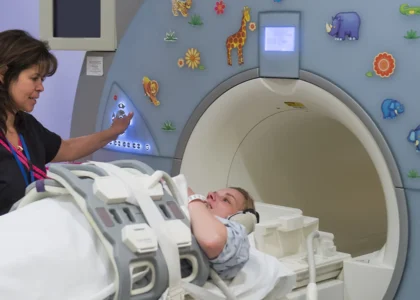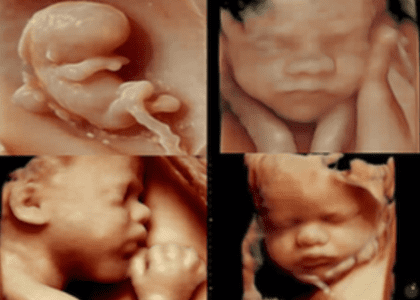The term “echogenic intracardiac focus” (EIF) may sound complicated, but it just describes a bright area on a fetal heart ultrasound. Even though it is frequently a benign finding, expectant parents may get concerned about its existence. In this blog, we will define EIF, look into possible causes, and talk about what to do next if it is found during prenatal ultrasound.
What is Echogenic Intracardiac Focus?
We must define EIF before we can comprehend it. A structure is said to as “echogenic” if it can produce echoes on an ultrasound, which indicates that it reflects more ultrasonic waves than the surrounding tissues. “Focus” denotes a localised region of interest, whereas “intracardiac” just means within the heart. EIF is, to put it simply, a bright spot that an ultrasound examination finds in the fetal heart. To be considered an EIF, it must be as bright as fetal bone and seen in two Imaging planes.
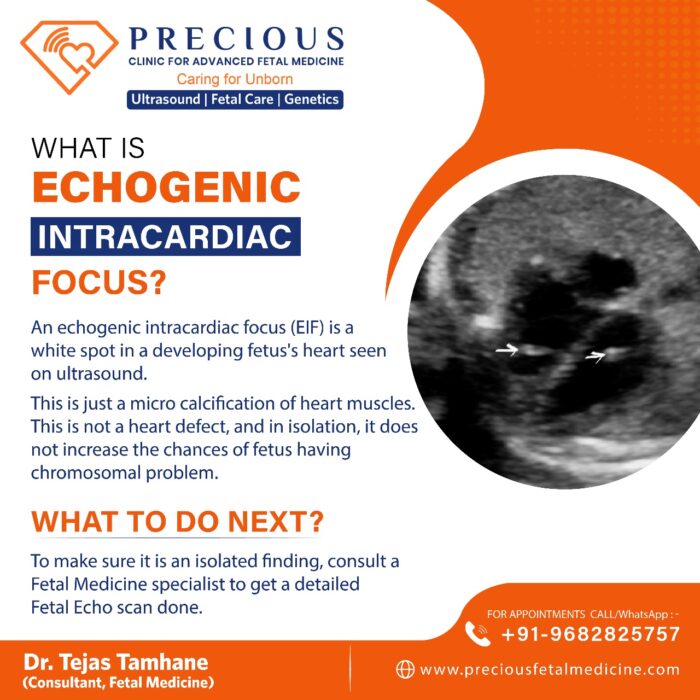
Causes of Echogenic Intracardiac Focus:
Calcification in the Heart:
EIF is frequently linked to minute calcium deposits in the heart’s tissue. Although this may sound concerning, it’s important to remember that isolated EIF is usually regarded as an innocuous finding and isn’t connected to any structural cardiac problems. For ultrasounds performed in the second and third trimesters of pregnancy, EIF is rather prevalent, especially in the Asian population.
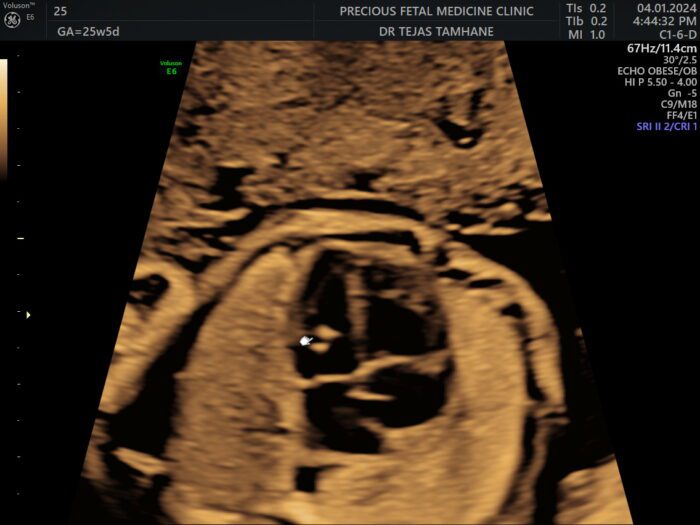
Genetic Predisposition:
In certain instances, if it is associated with other abnormal findings or ‘soft markers’ in the fetus, then a fetal medicine specialist may advise you to further tests just to rule out the possibility of underlying genetic conditions. However, it’s important to keep in mind that EIF is a very common finding in prenatal ultrasounds, and if isolated, it is not associated with any genetic issue in the fetus and does not affect the heart’s functionality.
What to Do Next:
Speaking with a fetal medicine specialist is the first and most crucial action to take following the discovery of EIF. They will offer you tailored advice depending on your particular circumstances. Remember that EIF is typically a benign, isolated occurrence, so try not to get too worked up.
- Fetal Echocardiography – Just to make sure that EIF is an isolated finding, a fetal medicine specialist may perform a detailed fetal echocardiography which will rule out any structural or functional abnormality in the fetal heart.
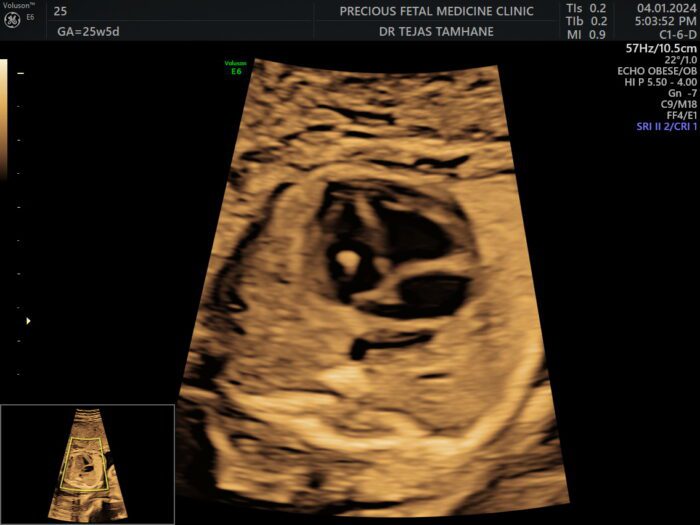
2. Aneuploidy screening test – If the first trimester combined screening (commonly known as the Double Marker test) is done previously then no further blood test is required. If it is not done, then you will be advised to get either a Quadruple marker test or NIPT.
3. Follow-up Ultrasound: Your doctor might advise a follow-up ultrasound to check on the EIF, depending on the specifics of the case. As the pregnancy goes on, the bright spot often goes away on its own, usually in the third trimester of pregnancy. With this follow-up ultrasound, medical professionals can also monitor any fetal cardiac alterations.
In Conclusion:
Prospective parents may have concerns if they find Echogenic Intracardiac Focus during a pregnancy ultrasound. However, it’s important to approach this finding with a balanced perspective. EIF is commonly a benign and isolated occurrence, and in many cases, it resolves on its own. It does not affect fetal heart function in any manner even after delivery. By consulting with a fetal medicine consultant, staying informed, and following recommended steps, parents can navigate this aspect of prenatal care and focus on the joy of expecting a new addition to their family.
Echogenic Intracardiac Focus
Trust Dr Tejas Tamhane, Fetal Medicine Consultant, to guide you through the detection and management of genetic and chromosomal disorders.

